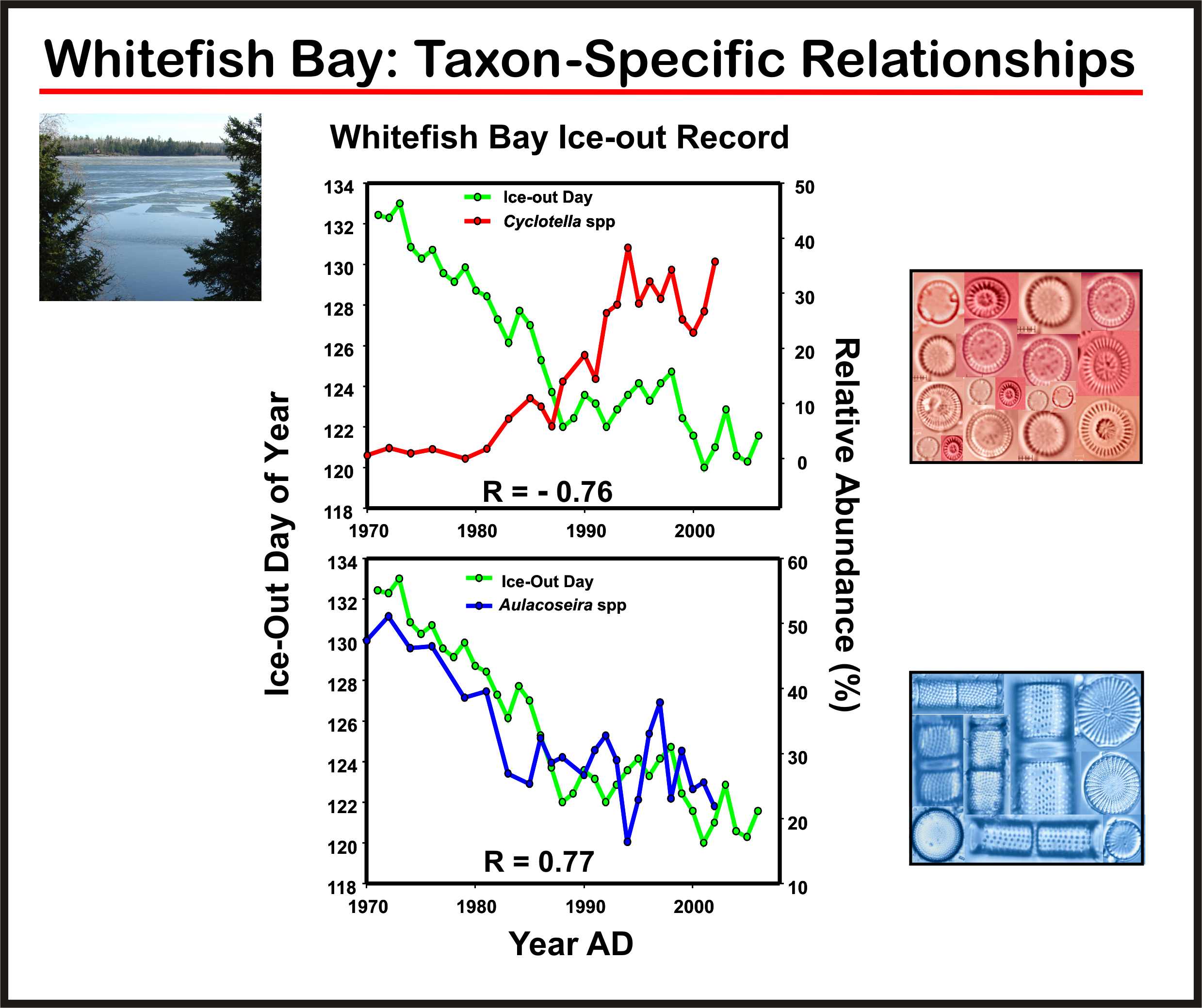
| |
| HOME |
| PEOPLE |
| RESEARCH |
| PRESENTATIONS |
| NEWS & LINKS |
| P.E.A.R.L. |
| Planktonic diatoms & recent warming |
||
|
Hemispheric-scale patterns of climate-related shifts in planktonic diatoms from North American and European lakes Kathleen Rühland, Andrew M. Paterson and John P. Smol Published in Global Change Biology (2008) 14, doi: 10.1111/j.365-2486.2008.01670 |
|
Abstract A synthesis of over 200 diatom-based paleolimnological records from non-acidified/non-enriched lakes reveals remarkably similar taxon-specific shifts across the Northern Hemisphere since the 19th century. Our data indicate that these diatom shifts occurred in conjunction with changes in freshwater habitat structure and quality, which, in turn, we link to hemispheric warming trends. Significant increases in the relative abundances of planktonic Cyclotella taxa (p<0.01) were concurrent with sharp declines in both heavily silicified Aulacoseira taxa (p<0.01) and benthic Fragilaria taxa (p<0.01). We demonstrate that this trend is not limited to Arctic and alpine environments, but that lakes at temperate latitudes are now showing similar ecological changes. As expected, the onset of biological responses to warming occurred significantly earlier (p<0.001) in climatically-sensitive Arctic regions (median age = AD 1870) compared to temperate regions (median age = AD 1970). In a detailed paleolimnological case study, we report strong relationships (p<0.005) between sedimentary diatom data from Whitefish Bay, Lake of the Woods (Ontario, Canada), and long-term changes in air temperature and ice-out records. Other potential environmental factors such as atmospheric nitrogen deposition, could not explain our observations. These data provide clear evidence that unparalleled warming over the last few decades resulted in substantial increases in the length of the ice-free period that, similar to 19th century changes in high latitude lakes, likely triggered a reorganization of diatom community composition. We show that non-acidified, nutrient-poor, freshwater ecosystems throughout the Northern Hemisphere have crossed important climatically-induced ecological thresholds. These findings are worrisome, as the ecological changes that we report at both mid- and high-latitude sites have occurred with increases in mean annual air temperature that are less than half of what is projected for these regions over the next half century. |
||


